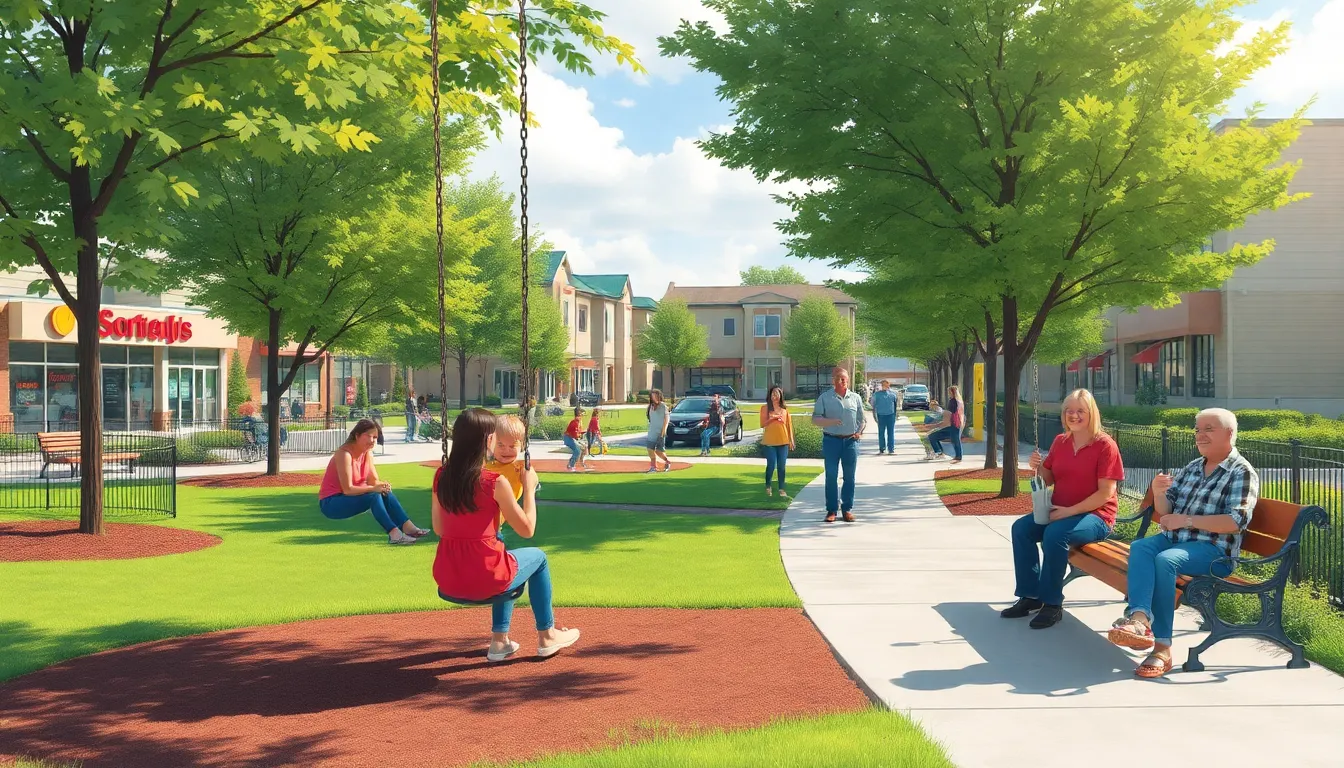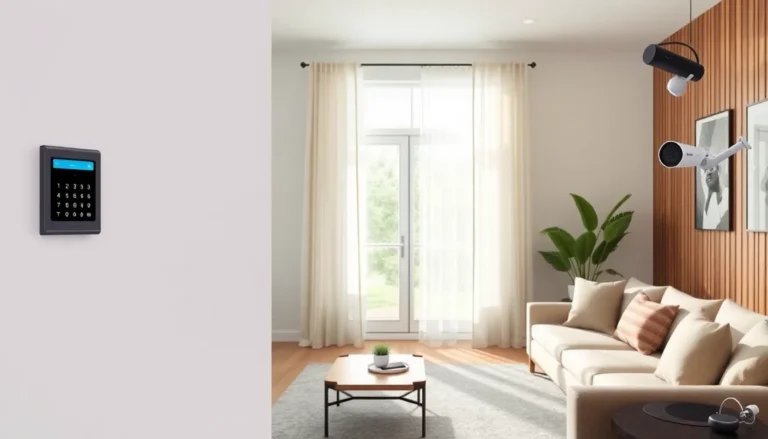Finding an affordable neighborhood can feel like searching for a unicorn in a haystack. With rising housing costs and the ever-elusive dream of homeownership, many people wonder if they’ll ever find a place that doesn’t require a second mortgage on their morning coffee. But fear not! Affordable neighborhoods do exist, and they’re not all hidden behind a “Beware of Dog” sign.
Table of Contents
ToggleWhat Are Affordable Neighborhoods?
Affordable neighborhoods refer to areas where housing costs are reasonable compared to the median income in the region. These neighborhoods often provide access to essential amenities, public transportation, and quality schools. Many families and individuals seek these locations due to lower living expenses while maintaining a good quality of life.
Housing affordability is typically determined by home prices, rental costs, and the overall economic landscape. In these neighborhoods, individuals can find options that fit within their budget, making homeownership and renting accessible. Cities often have specific zones where real estate remains affordable despite rising overall prices.
Families thrive in these communities because of the supportive environment and services available. Local governments may encourage the development of affordable housing through incentives, aiming to enhance the livability of these areas. Nonprofits also work to create and preserve affordable housing, providing essential support to residents.
Factors influencing housing affordability range from job opportunities to community resources. Economic stability in these neighborhoods often attracts new residents, which may impact housing demand. When the community fosters growth and development, it helps ensure the availability of affordable options.
Selecting an affordable neighborhood involves careful consideration of various elements. Assessing proximity to work, schools, public transportation, and recreational facilities plays a vital role. Ultimately, affordable neighborhoods present viable choices for those aiming to balance comfort and financial responsibility.
Benefits Of Living In Affordable Neighborhoods

Affordable neighborhoods offer significant advantages for families and individuals seeking financial stability. These benefits go beyond just price, enhancing overall quality of life.
Cost of Living Savings
Living in an affordable neighborhood directly reduces monthly housing costs. Lower rent or mortgage payments allow more funds for savings and discretionary spending. Residents can redirect money toward education, healthcare, or recreational activities. Additionally, affordable areas often feature lower property taxes, which contributes further to savings. In many cases, choosing an affordable neighborhood supports a balanced budget, leading to financial peace of mind.
Access to Amenities
Affordable neighborhoods frequently provide easy access to essential amenities. Grocery stores, healthcare facilities, and public transport typically remain within a short distance. Many of these areas also prioritize parks and community centers, fostering a sense of community among residents. Quality schools are often present, helping families prioritize education. Access to these amenities enhances daily life while minimizing the need for extensive travel and added expenses. Such convenience contributes to improved overall well-being, offering a better work-life balance.
Factors To Consider When Choosing An Affordable Neighborhood
Selecting an affordable neighborhood involves various important factors. These elements influence both financial stability and overall quality of life.
Safety and Security
Safety ranks high on the list when choosing a neighborhood. Residents prioritize areas with lower crime rates, contributing to peace of mind. Local police presence and community watch programs often enhance security perceptions. Statistics show that neighborhoods with active community involvement tend to experience fewer incidents. Engaging in community forums can help determine safety in specific areas. Researching crime reports adds another layer of understanding regarding neighborhood safety.
Schools and Education
Quality education plays a pivotal role in neighborhood selection. Proximity to reputable schools often enhances property values and attracts families. Ratings from state-level assessments provide insight into school performance. Access to a variety of educational options, including public, charter, and private institutions, matters significantly. Residents value neighborhoods with strong academic accomplishments and extracurricular opportunities. Local educational resources, such as libraries and tutoring centers, create an enriched environment for children.
Commute and Transportation
Commute convenience shapes many people’s decisions on where to live. Accessibility to public transport systems significantly influences daily routines. Proximity to major highways or public transit can reduce travel time to work and essential services. Evaluating commute times to employment locations leads to better living arrangements. Neighborhoods with bike paths and pedestrian-friendly layouts often promote healthier lifestyles. Assessing transportation options adds critical value to the overall appeal of a neighborhood.
Popular Affordable Neighborhoods Across the U.S.
Cities like Pittsburgh, Pennsylvania, offer affordable housing options with a median home price around $190,000. Residents enjoy a low cost of living and access to parks, hospitals, and public transport. Additionally, Memphis, Tennessee, boasts excellent rental prices averaging $1,075 for a two-bedroom apartment, appealing to those who want budget-friendly living.
In Ohio, Cleveland stands out with affordable home prices near $150,000. The community encompasses cultural attractions and diverse neighborhoods, promoting enjoyable lifestyles for families and singles alike. Another option lies in Buffalo, New York, where the median property cost is approximately $190,000, with extensive recreational facilities enhancing the neighborhood appeal.
Dallas, Texas, also ranks among the affordable options. Home values around $280,000 provide opportunities for families seeking good schools and accessible amenities. Similarly, Tucson, Arizona, offers homes at roughly $250,000, attracting individuals interested in a warm climate and outdoor activities.
Cities like Indianapolis, Indiana, present median property values of about $200,000, providing excellent opportunities for first-time homebuyers. With its vibrant local arts scene and numerous parks, the area remains family-friendly and community-oriented. Lastly, Kansas City, Missouri, features homes priced at approximately $250,000, making it an attractive option for those looking for affordable housing and a lively cultural scene.
Finding an affordable neighborhood is more attainable than many think. With careful research and consideration of key factors like safety, schools, and transportation, individuals can discover areas that fit their budget and lifestyle. The benefits of living in these neighborhoods extend beyond lower housing costs, offering a supportive community and access to essential amenities.
Cities across the U.S. provide promising options for those seeking affordability without sacrificing quality of life. By exploring these neighborhoods, residents can enjoy financial stability while creating a fulfilling home environment. It’s all about making informed choices to ensure a brighter and more secure future.



